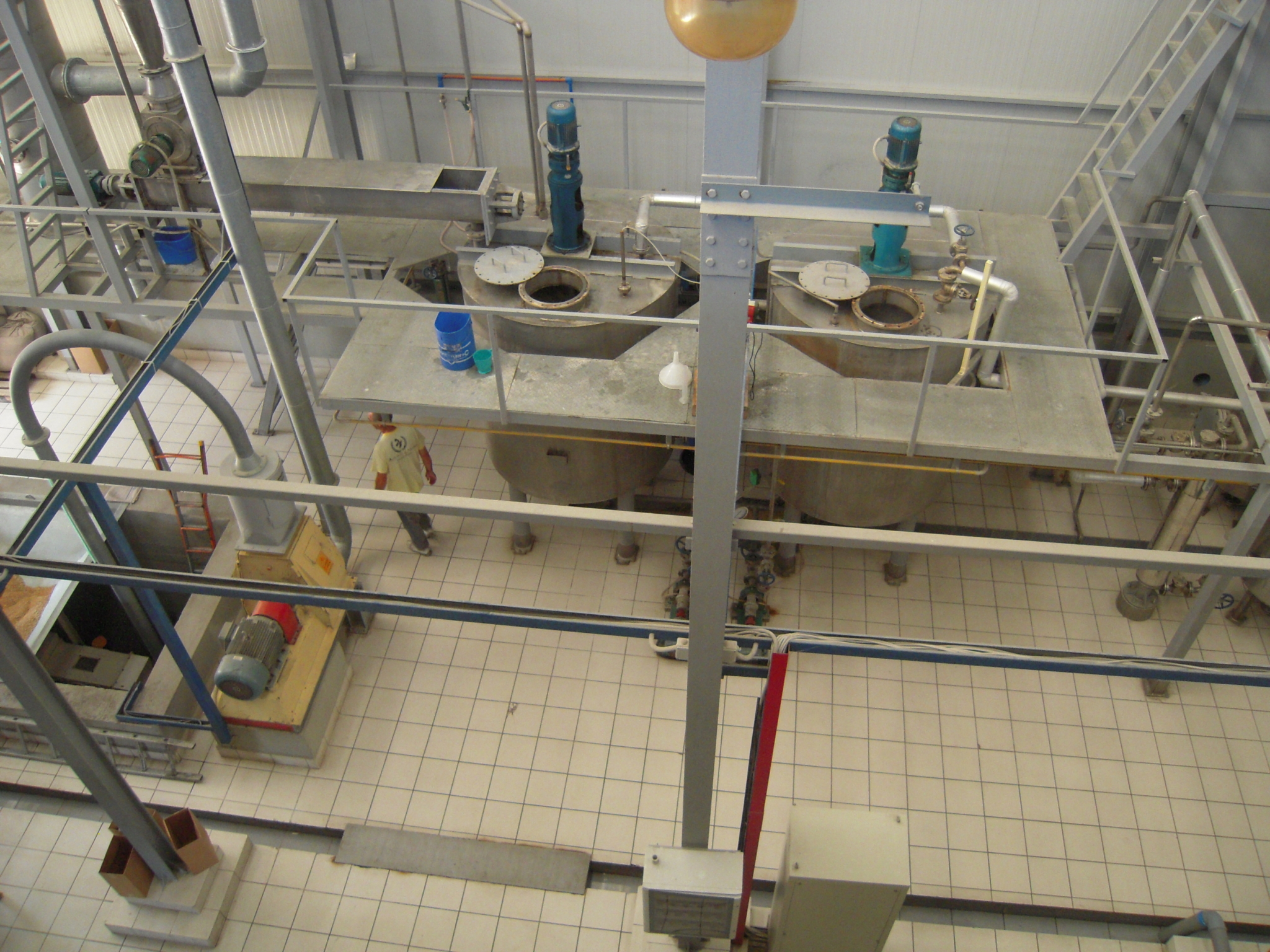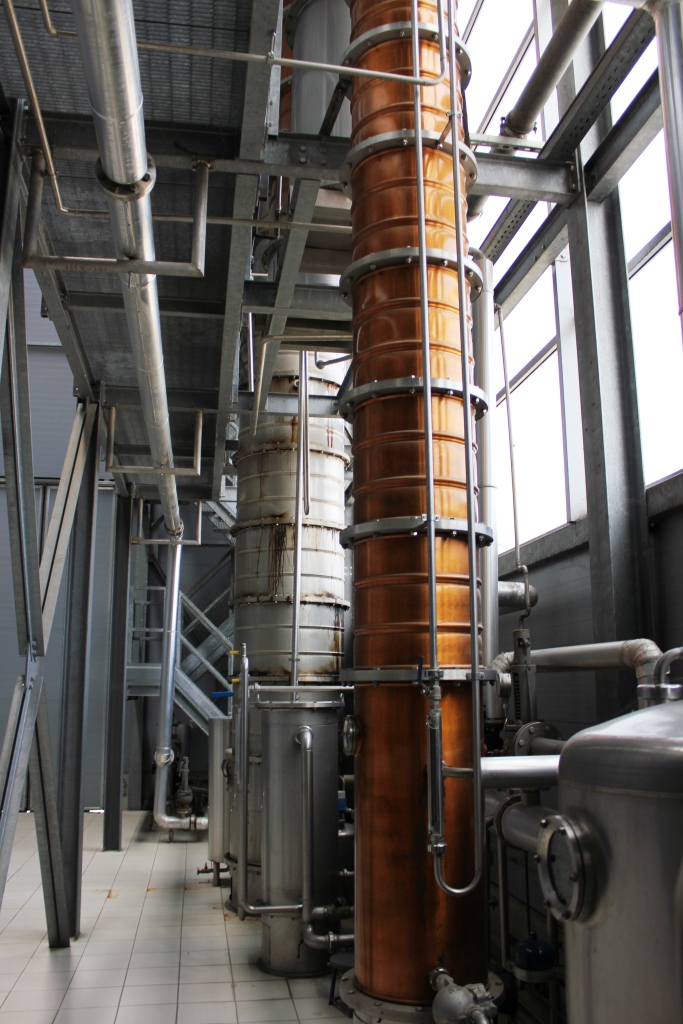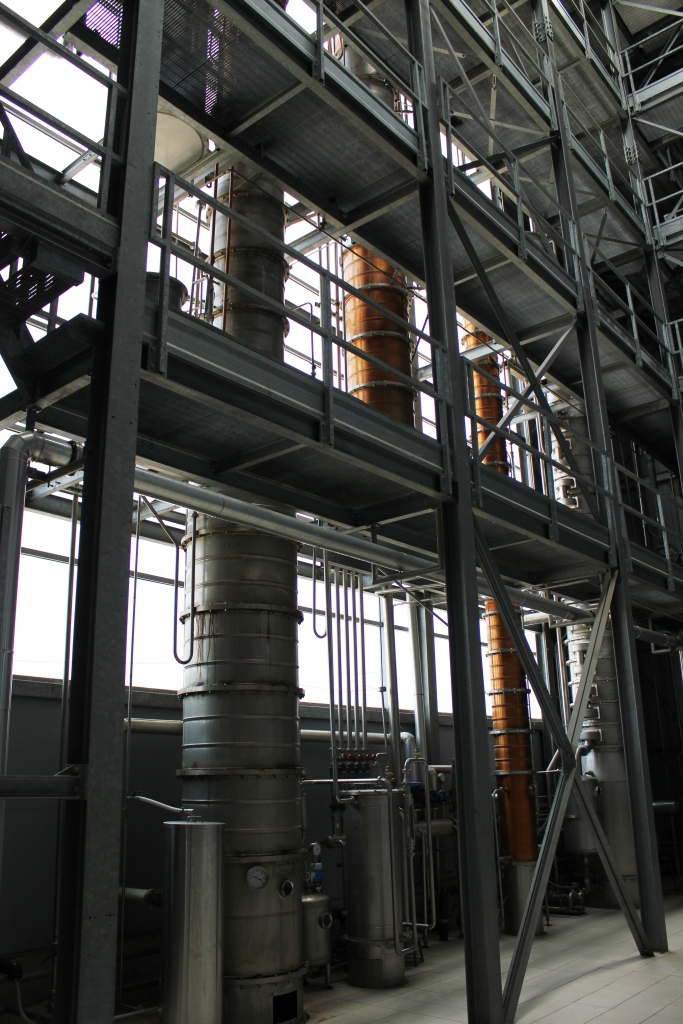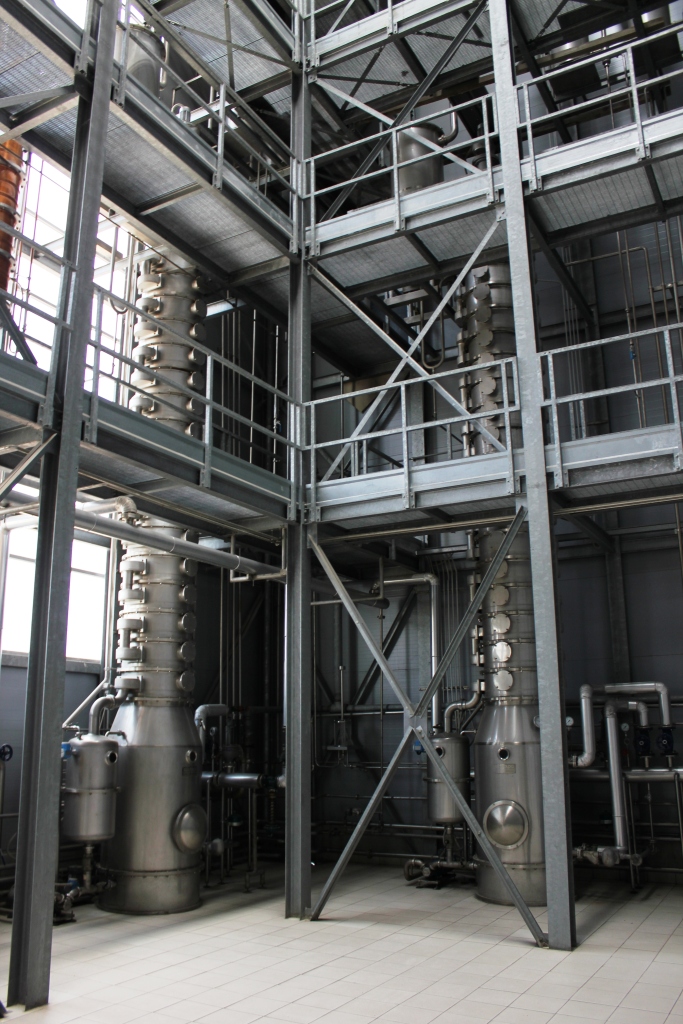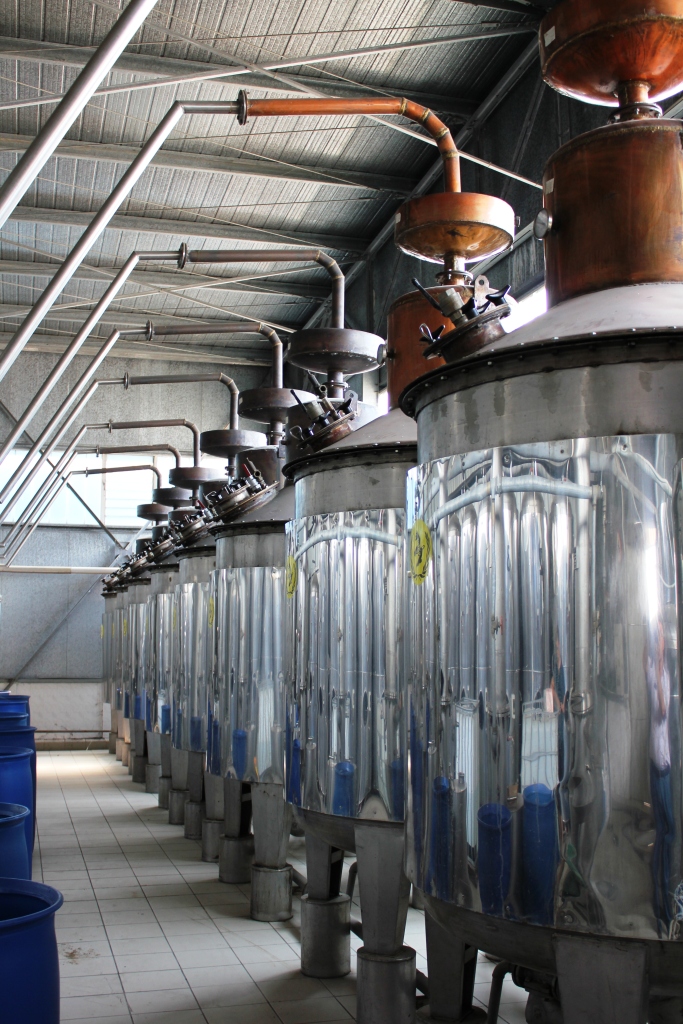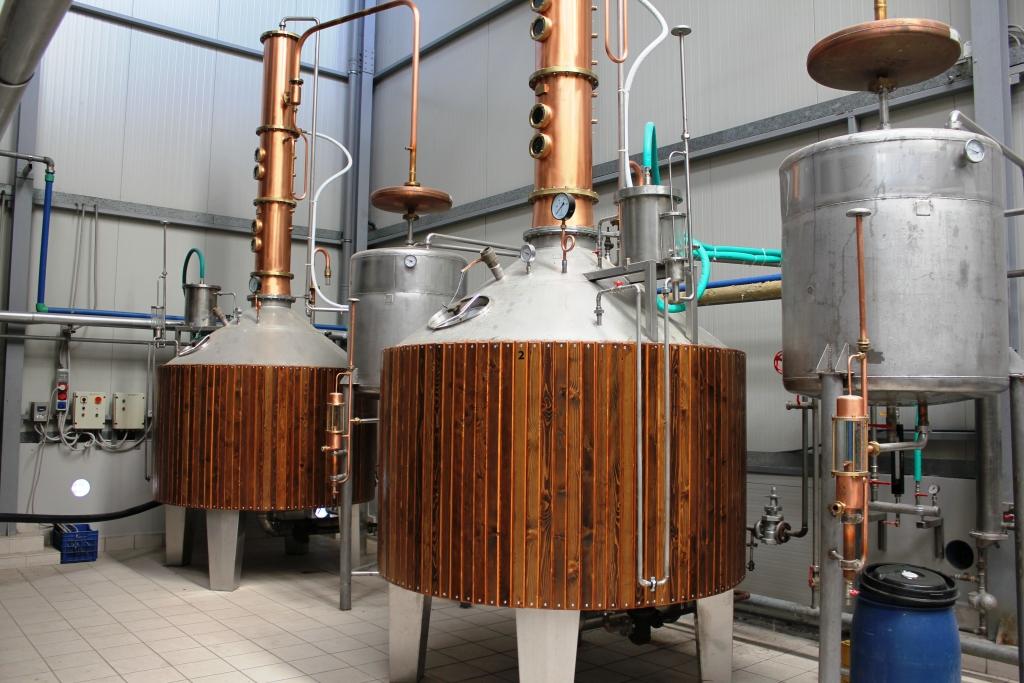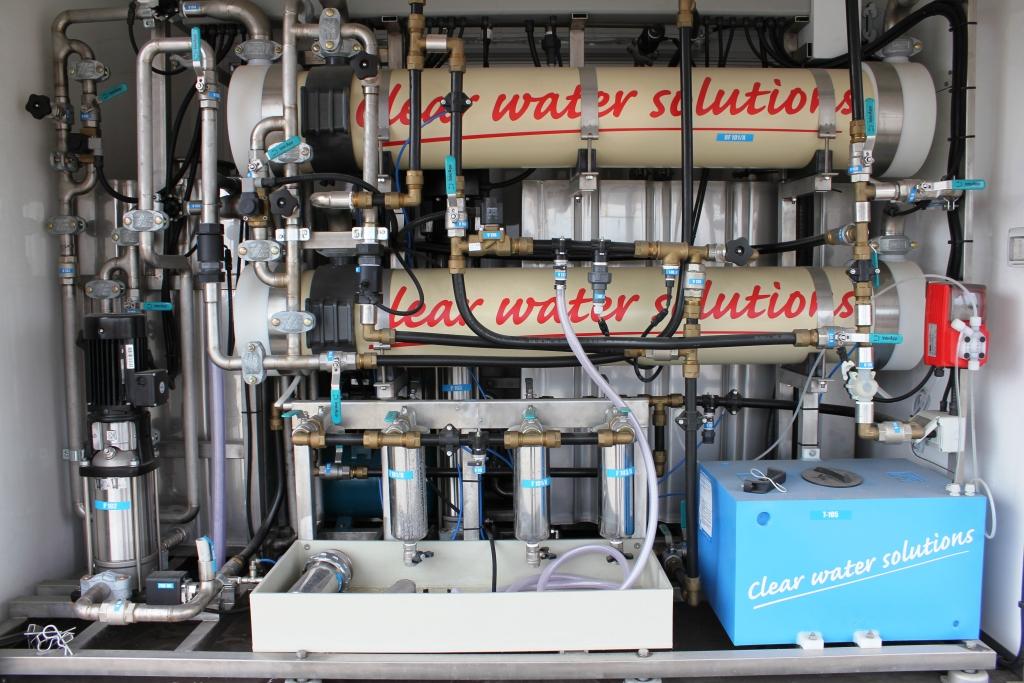THE DISTILLERY
THE DISTILLERY
The art of distillation
Distillation using traditional stills or industrial columns is an art that cannot be improvised.
Our know-how is comprised of adapted working tools, the skills of our operators and the willingness to do things right. The result is a quality distillate to produce excellent whiskies, brandies or spirits.
It is with the love of the profession, great experience, unwavering determination and unfailing patience that a Great Cellar Master will produce the best potable alcohol. Several methods can be used and each region ardently defends its way of operating, but it’s the result that matters, and when a finished product exults a quintessence, the whole company is proud of the result, because everyone in their own way participated with their skills.
Each Great Cellar Master jealously keeps all his little secrets and will not pass them on to other persons, until he deems it absolutely necessary.
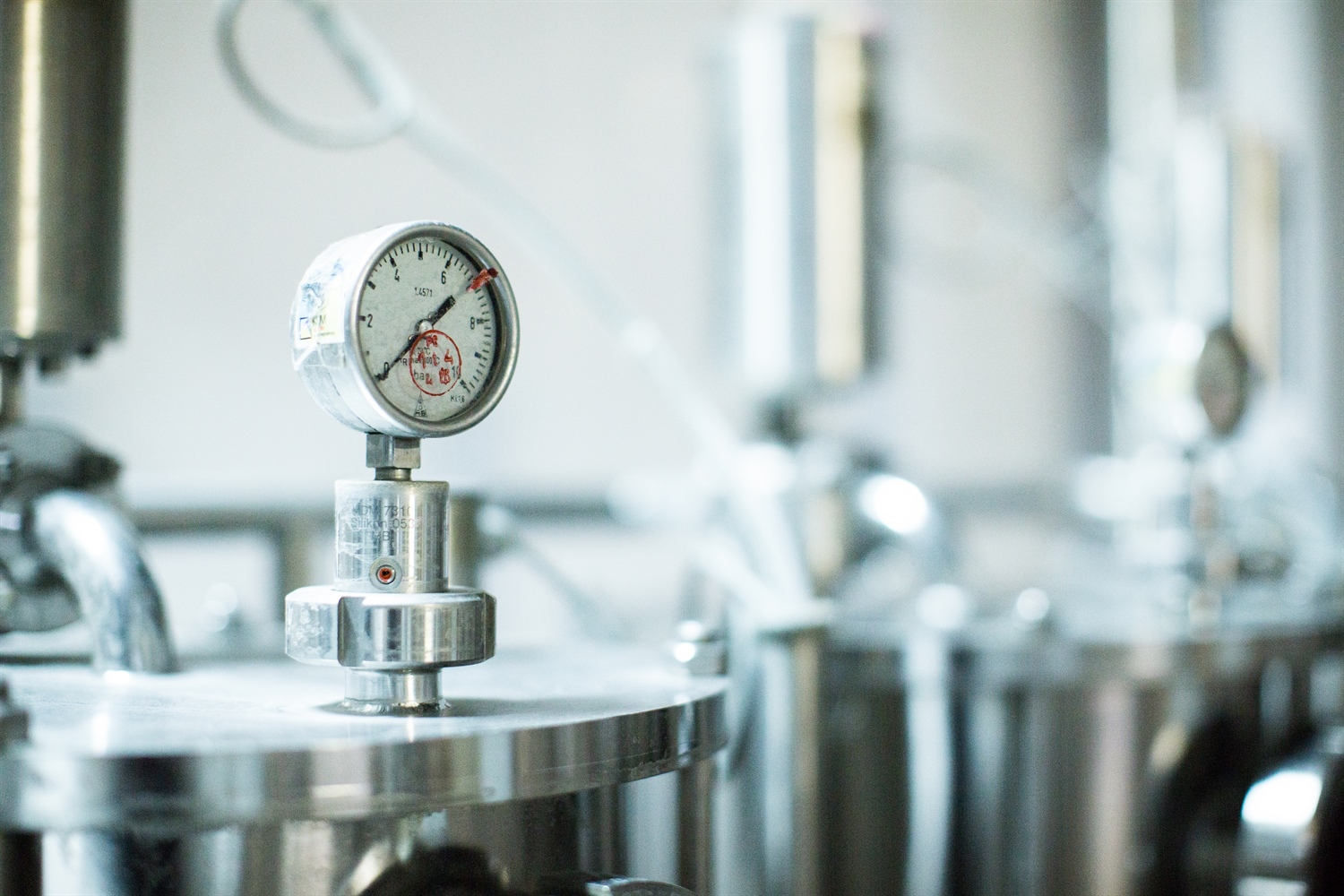
The art of distillation
Distillation using traditional stills or industrial columns is an art that cannot be improvised.
Our know-how is comprised of adapted working tools, the skills of our operators and the willingness to do things right. The result is a quality distillate to produce excellent whiskies, brandies or spirits.
It is with the love of the profession, great experience, unwavering determination and unfailing patience that a Great Cellar Master will produce the best potable alcohol. Several methods can be used and each region ardently defends its way of operating, but it’s the result that matters, and when a finished product exults a quintessence, the whole company is proud of the result, because everyone in their own way participated with their skills.
Each Great Cellar Master jealously keeps all his little secrets and will not pass them on to other persons, until he deems it absolutely necessary.

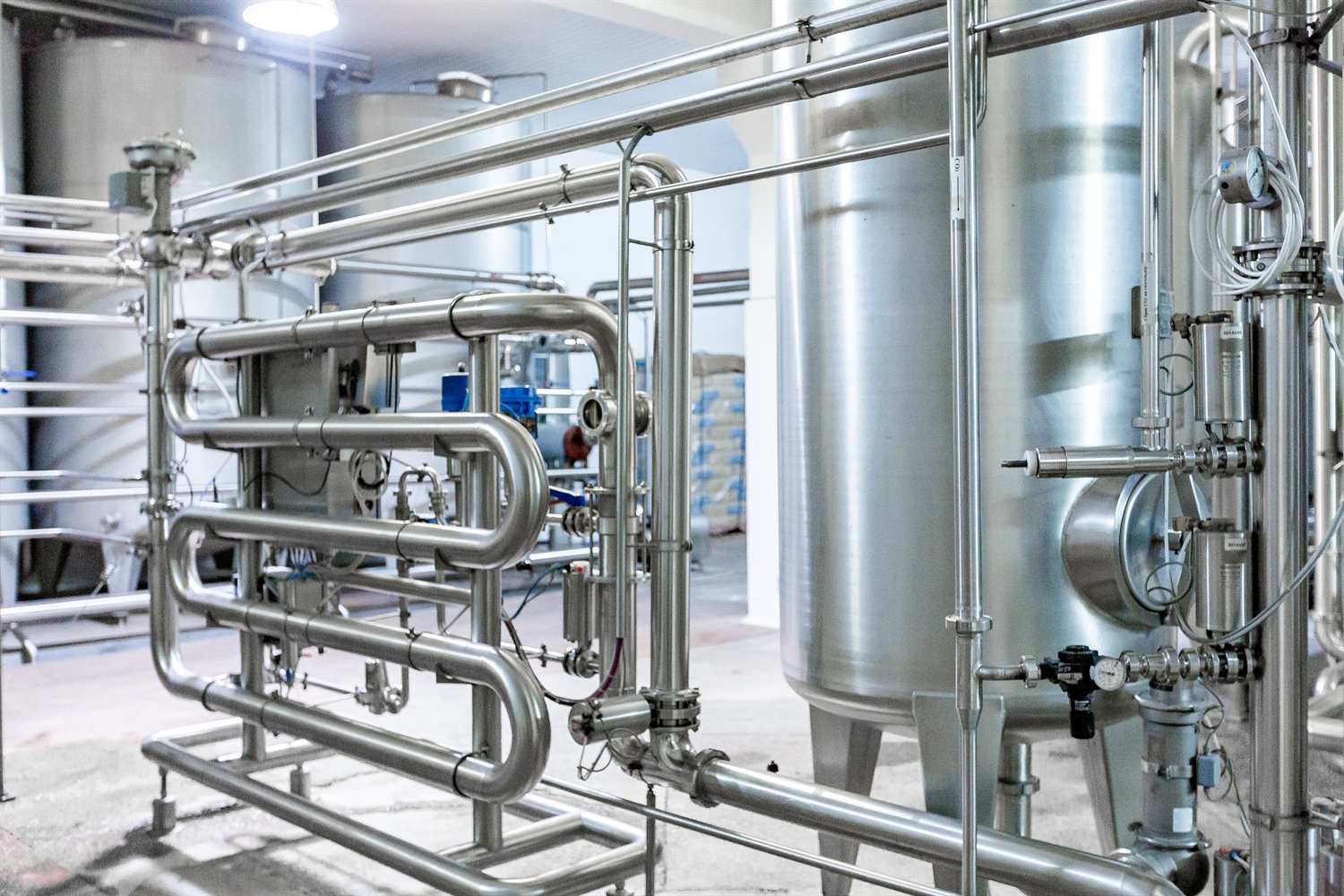
The distillation of our whiskies
Our grain whiskies are produced using the Patent Still process. The musts contain cereals (malted barley, wheat and corn). They are cooked under steam pressure and mechanical stirring in converters. The grain cells burst and release their starch. When the mixture of cereals is introduced into mash tuns, the malted barley diastase converts the starch into sweetened cereals. The must is collected at a specific weight and distilled in a still according to the Patent principle, which will give a distillate at an alcoholic strength of about 70 to 79%. After that, our distillates are tasted, analysed, possibly blended and matured for three years in French and American oak barrels, with a capacity ranging between 200 and 500 litres. During this period of aging, it is the Cellar Master who will jealously observe the positive development of his whisky. Throughout this period he will carry out various operations in order to improve the whiskeys. It is the passion of a Great Cellar Master, the work of nature and the maturation conditions that will make his whiskies a subtle nectar.
LThe distillation of our whiskies
Our grain whiskies are produced using the Patent Still process. The musts contain cereals (malted barley, wheat and corn). They are cooked under steam pressure and mechanical stirring in converters. The grain cells burst and release their starch. When the mixture of cereals is introduced into mash tuns, the malted barley diastase converts the starch into sweetened cereals. The must is collected at a specific weight and distilled in a still according to the Patent principle, which will give a distillate at an alcoholic strength of about 70 to 79%. After that, our distillates are tasted, analysed, possibly blended and matured for three years in French and American oak barrels, with a capacity ranging between 200 and 500 litres. During this period of aging, it is the Cellar Master who will jealously observe the positive development of his whisky. Throughout this period he will carry out various operations in order to improve the whiskeys. It is the passion of a Great Cellar Master, the work of nature and the maturation conditions that will make his whiskies a subtle nectar.

Our Malts and Brandies
Our precious malted barley malts and roasted malts are made with traditional stills of 25 hectolitres and according to hereditary methods – this assures us the best results in the blends of our whiskies.
The fermented must wines are also distilled in these traditional stills and transformed into wine spirits according to a double distillation method and substantially following the same process as for the distillation of our fruit spirits (mentioned below). Each spirit will be tasted, analysed and classified according to very stringent selection criteria.
Finally, they will be left to age in small French and American oak barrels of up to 600 litres, whereas each barrel will be chosen according to the desired organoleptic elements. They will stay in the barrels for a period from six months (for very young brandies) up to 8 years for some other spirits (whiskies and brandies).
The average duration of maturation of our spirits is generally 4 to 5 years. During this long period, the Cellar Master attentively follows the maturation of the spirits, stepping in whenever necessary and thus adding all his experience to the process that naturally takes place in the barrels. The combination of the two allied forces gives the remarkable result that is acknowledged by all our customers.
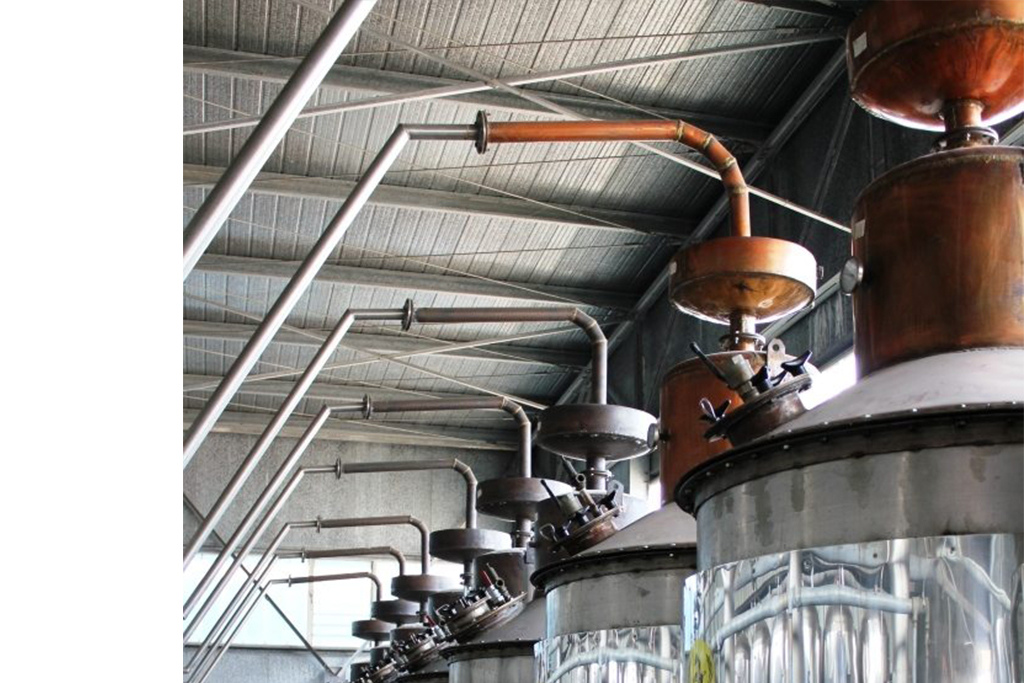
Our Malts and Brandies
Our precious malted barley malts and roasted malts are made with traditional stills of 25 hectolitres and according to hereditary methods – this assures us the best results in the blends of our whiskies.
The fermented must wines are also distilled in these traditional stills and transformed into wine spirits according to a double distillation method and substantially following the same process as for the distillation of our fruit spirits (mentioned below). Each spirit will be tasted, analysed and classified according to very stringent selection criteria.
Finally, they will be left to age in small French and American oak barrels of up to 600 litres, whereas each barrel will be chosen according to the desired organoleptic elements. They will stay in the barrels for a period from six months (for very young brandies) up to 8 years for some other spirits (whiskies and brandies).
The average duration of maturation of our spirits is generally 4 to 5 years. During this long period, the Cellar Master attentively follows the maturation of the spirits, stepping in whenever necessary and thus adding all his experience to the process that naturally takes place in the barrels. The combination of the two allied forces gives the remarkable result that is acknowledged by all our customers.
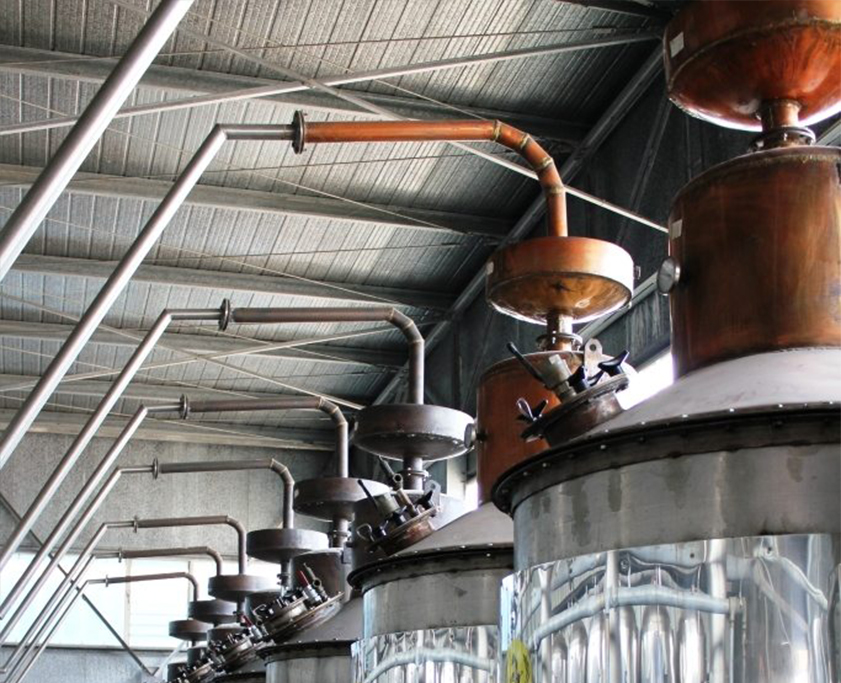
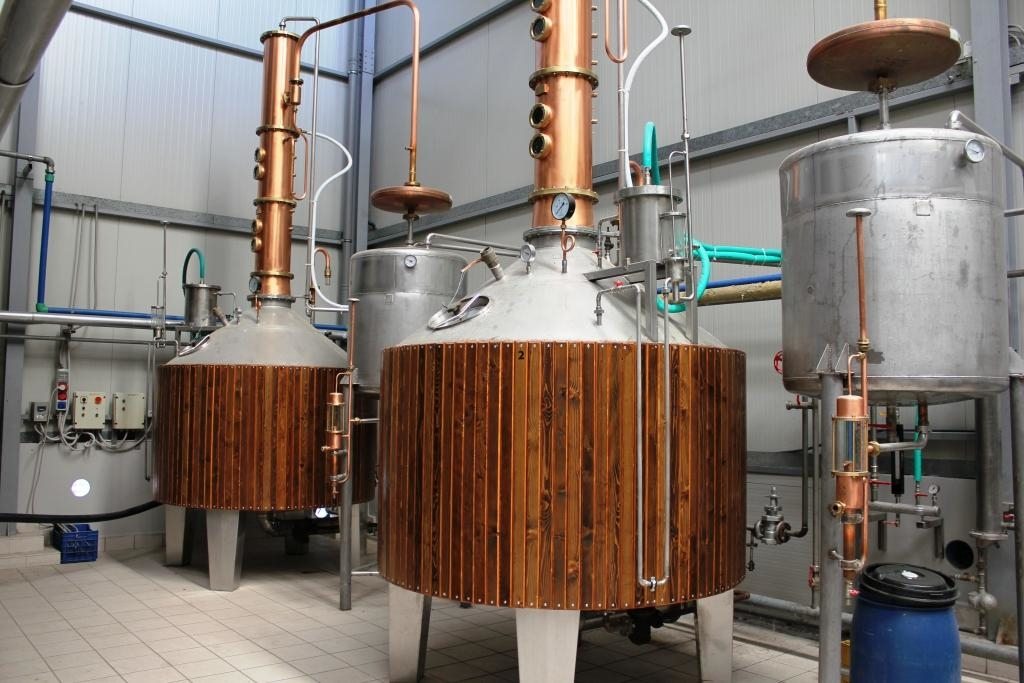
The distillation of our fruit spirits
It is carried out in two successive heating processes by using traditional stills. This is how we get spirits with a strong aromatic intensity and many complex notes.
Then, the process continues with two distillations. During the first distillation, the must is loaded into the heater of the still until the boiling of the last one. The alcohol vapours rise and pass through the gooseneck before going to the condenser to finish in a complex and rather non-beverage alcoholic liquid.
The second distillation will take place in three stages:
- the non-beverage alcohol is boiled again in the heater, the beginning of this distillation called “head” is eliminated,
- the centre of the distillation, called “heart”, concentrates all the aromas of the fruits, and it is this alcohol that is conserved to be eventually blended and aged.
- the last part of the distillation, called “tail” will also be removed and possibly redistilled in order to get less valued spirits.
The distillation of our fruit spirits
It is carried out in two successive heating processes by using traditional stills. This is how we get spirits with a strong aromatic intensity and many complex notes.
Then, the process continues with two distillations. During the first distillation, the must is loaded into the heater of the still until the boiling of the last one. The alcohol vapours rise and pass through the gooseneck before going to the condenser to finish in a complex and rather non-beverage alcoholic liquid.
The second distillation will take place in three stages:
- the non-beverage alcohol is boiled again in the heater, the beginning of this distillation called “head” is eliminated,
- the centre of the distillation, called “heart”, concentrates all the aromas of the fruits, and it is this alcohol that is conserved to be eventually blended and aged.
- the last part of the distillation, called “tail” will also be removed and possibly redistilled in order to get less valued spirits.


